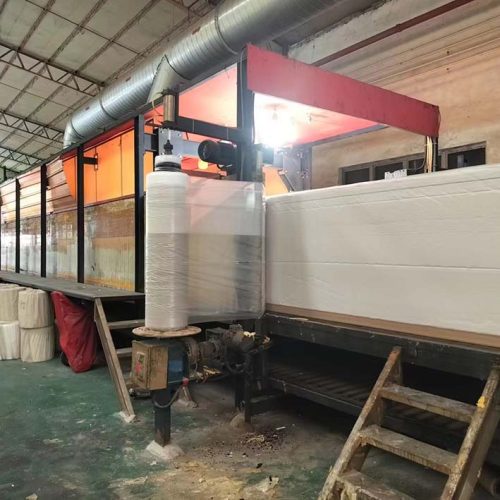I. Benefits of On-site Polyurethane Foaming Technology:
On-site foaming and spraying (or pouring) polyurethane foam insulation creates a seamless surface, minimizing heat loss. This method offers high construction efficiency, easily meets quality standards, simplifies construction procedures, and eliminates the need for anti-corrosive coatings on pipe surfaces.
II. Principles of the Polyurethane On-site Foaming Construction Process:
The process of polyurethane foam plastic foaming, spraying, and pouring involves a polycondensation reaction between polyether and isocyanate to form amine methacrylate, producing the necessary polyurethane foam plastic. During this reaction, catalysts, crosslinking agents, foaming agents, and foam stabilizers are added to promote and optimize the chemical reaction.
These raw materials are divided into two groups, mixed thoroughly, and then pumped into a specialized spray gun by metering pumps in precise proportions. They are mixed and sprayed onto the surface of pipelines or equipment, where they react, foam, and form foam plastic within 5-10 seconds, which then cures and solidifies.
III. Methods of Polyurethane On-site Foaming Construction:
Spraying Method: Two groups of solutions are stored in separate barrels according to the formula. The materials are filtered to the metering pump, driven by a pneumatic motor, and input into the gun body through the material tube. Compressed air regulates the material into the mixing chamber, where they are mixed and then sprayed onto the pipeline or equipment to foam and form.
Pouring Method: The prepared solutions are stored in barrels, filtered to the metering pump, driven by a pneumatic motor, and input into the pouring mixer through the material tube. Compressed air drives the stirring shaft to mix the materials, which are then injected into the mold for foaming and forming.
Precautions for Polyurethane On-site Foaming Construction:
Stir the material at room temperature to mix and react, then quickly pour it into the desired space. Control the reaction foaming time so that the mixed material remains in a liquid state when poured into the gap. During the foaming process, significant expansion forces will be generated, so proper reinforcement should be made to the pouring interlayer or mold.

